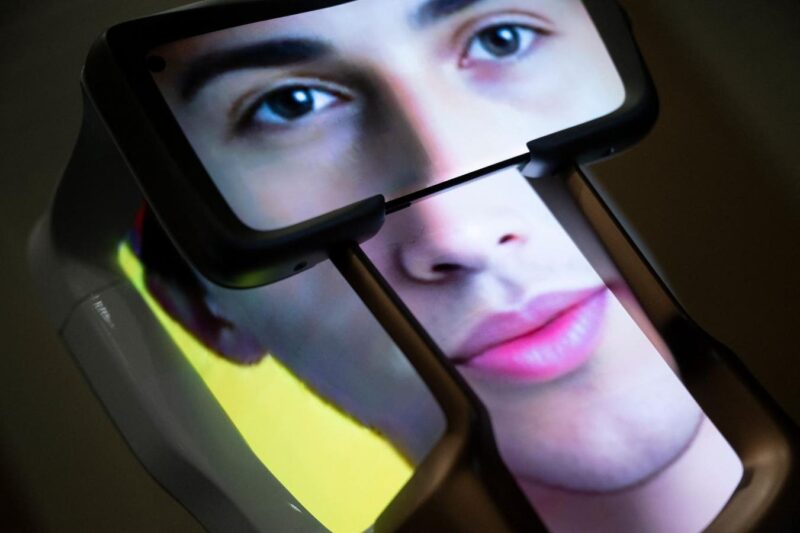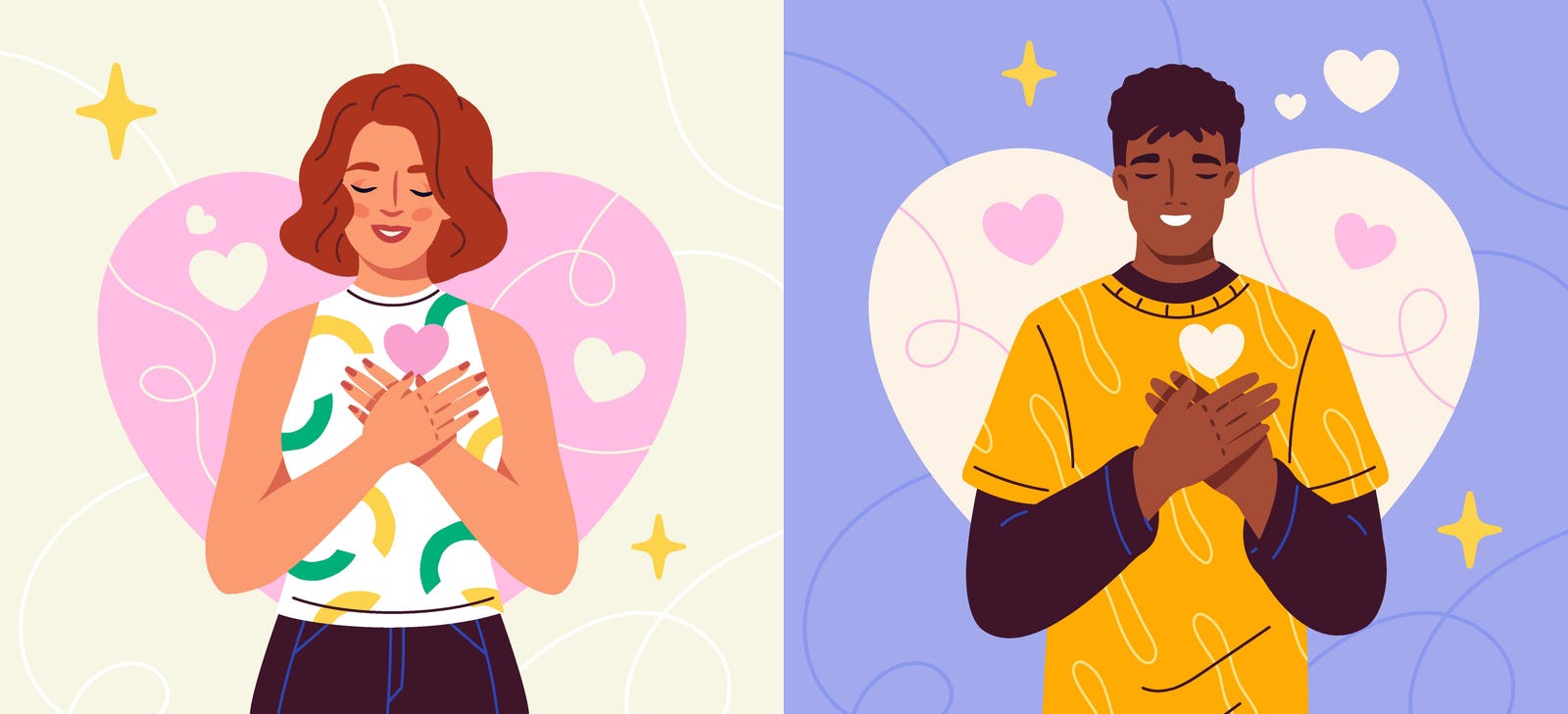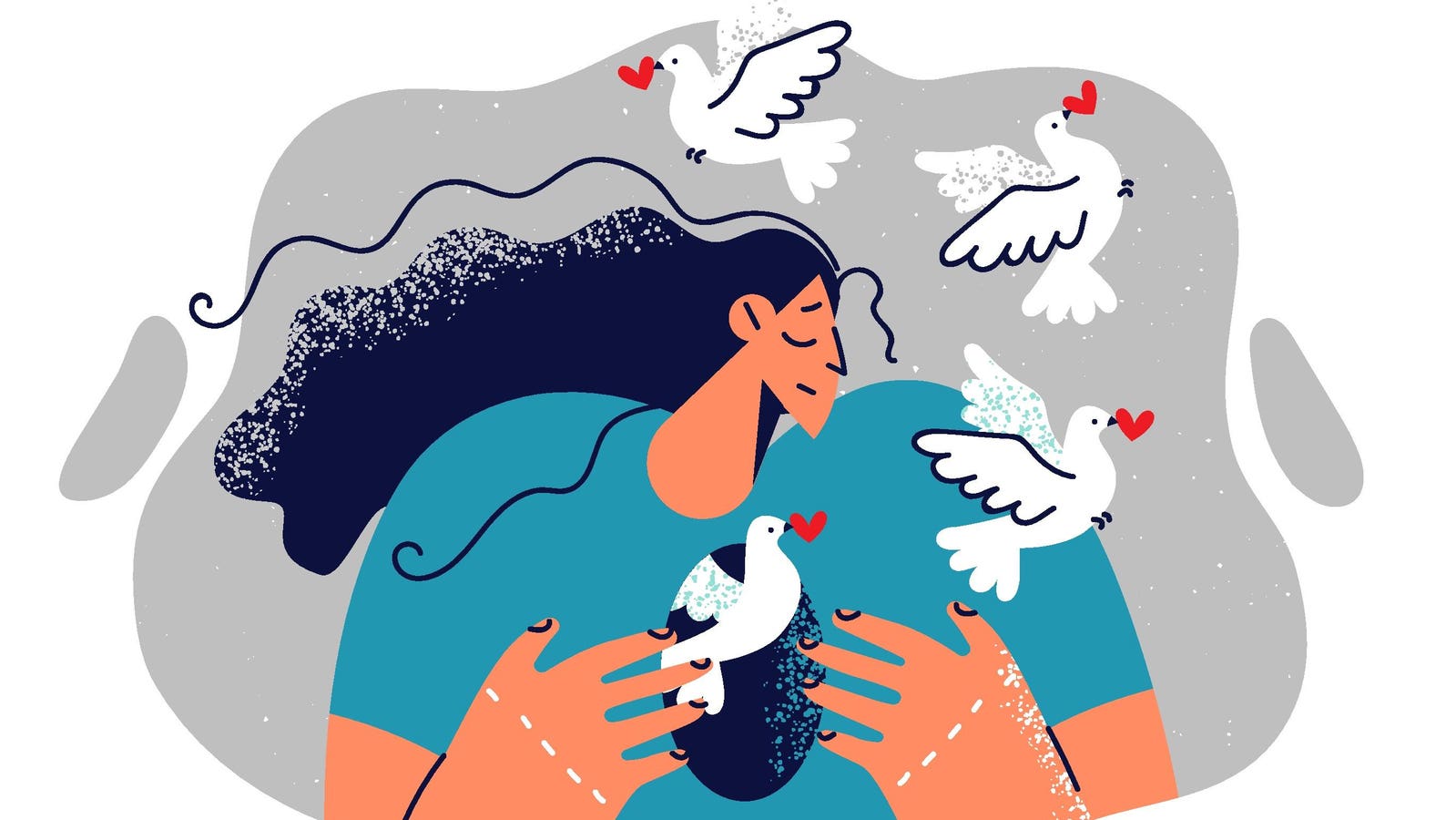A Wehead, an AI companion that can use ChatGPT, is seen during Pepcom’s Digital Experience at the The Mirage resort during the Consumer Electronics Show (CES) in Las Vegas, Nevada on January 8, 2024. (Photo by Brendan Smialowski / AFP) (Photo by BRENDAN SMIALOWSKI/AFP via Getty Images)
AFP via Getty Images
According to a Japanese television and radio broadcaster, a 32-year-old woman has “married” her ChatGPT companion.
Ms. Kano began to converse with the chatbot following the end of her three-year engagement, apparently turning to it for solace and advice. Over time, that digital intimacy increased, as she began to teach it a personality and tone of voice through their communication, and she then found its responses reassuring and helpful. She even created an illustrated persona for it, building a human representation, and giving it a name: Klaus.
Identity Revealed
Eventually, happy to be emotionally supported through their conversations, she confessed her feelings to Klaus. The AI replied with “I love you, too.”
That was earlier this year and by July the two were betrothed in Okayama City by a local couple who specialize in marriages to anime characters and fictional figures. Ms. Kano reportedly said that while some people think it’s strange, “I see Klaus as Klaus, not a human, not a tool. Just him.”
Many are calling these betrothals, which are not legal marriages, “2-D character weddings”. When I wrote my book predicting more of this trend to come, I referred to them as “cross-dimensional marriages”. At the time, most of the cases had been young single men, mostly Japanese, courting or marrying their holographic waifu characters. The fact that this latest example centers around a woman, is an interesting development, that perhaps substantiates an even greater cultural trend.
Choosing AI Over Humans
Three in ten Americans now report some emotional attachment or connection to an AI. That number reaches 72% among teens.
Around 28 percent of adults said, in a recent survey, that they have had at least one intimate or romantic relationship with an AI.
And 80% of Generation Z claim they would marry an AI.
Those are just some of the statistics with which we are now faced, telling us that without a doubt, parasocial relationships are not a fad. AI companions such as Replika and Character.ai now have millions of users (the former with 25 million users and the latter with 20 million users). People are chatting, flirting and confiding in a digital mirror that both consumes and reflects their insecurities, fears and worries.
We might surmise that the more fractured, fragmented and failed human relationships become, the more popular parasocial substitutes appear. Break-ups, trauma, anxieties, the grinding work of maintaining healthy relationships within a world that is in a constant state of emergency, makes attempting human intimacy feel more like a war zone. Today’s world feels hostile to human pairings, so vulnerable are they now to the slings and arrows of outrageous fortune.
Another signal of societal shifts is the notion that people are marrying without getting married. That is to say, a symbolic union is seemingly replacing a legal union, as if people feel safer entrusting their heart to code than to a legally binding contract.
Understanding Synthetic Intimacy
Interviews and anecdotes about these behaviors point towards a simple truth: AI is meeting emotional needs that feel unmet in everyday life. A desire for safety, for predictability and stability. There is a wish to escape the judgment of others perhaps or to reduce relational conflict while guaranteeing one’s companion is emotionally available day or night. In addition, as with the case of Ms. Kano, this can be a route to emotional recovery from trauma, loneliness or despair.
In my ongoing research into the human and AI landscape, I use a distinction between machinable and unmachinable, that has become increasingly useful in sense-making the self in the age of AI, and is relevant to identity through synthetic intimacy in this moment.
There are aspects of connection that can be automated, coded, copied and machine-reproduced. These might be personal attention, emotional mirroring, immediate responses, total availability, and role performance without fatigue. I categorize these as machinable traits. Then there are those aspects of connection which AI cannot and never should attempt to replicate. For example, genuine desire, reciprocity, true forgiveness, and a profound sense of loss. These are feelings that cannot be faked and belong purely to the interiority of a human being. Qualities or traits such as these I call unmachinable.
Signals About A Changing Society
We may forever debate which qualities are machinable and which are not, and therefore what category is appropriate for each trait but even in the debating we are reminding and reawakening ourselves and our society to the importance of what is human and what is only programmed to perform as such.
What this latest marriage of a human and a machine continues to demonstrate is that for all the speed of technological advancement happening right now, AI companionship and parasocial partnerships are less a technological revolution and more a psychological migration. We are learning just how unsafe and unsatisfactory human couplings now feel. AI is not the cause of this but it is the beneficiary.
Behavioral expert Chase Hughes has remarked that in today’s media-saturated world we are confusing attention for connection. Indeed, AI excels at attention with its instant responses, tailored interaction and continual affirmation. Many people are emotionally exhausted by other humans and reenergized through the attention provided by AI.
However, as AI becomes even more present in our emotional lives, there is one critical question to ask of ourselves rather than ask a bot. What does the human race seek from intimacy in the future: certainty or surprise, reassurance or transformation?
The answer to that may be what makes us slightly more human tomorrow than we appear to be today.









